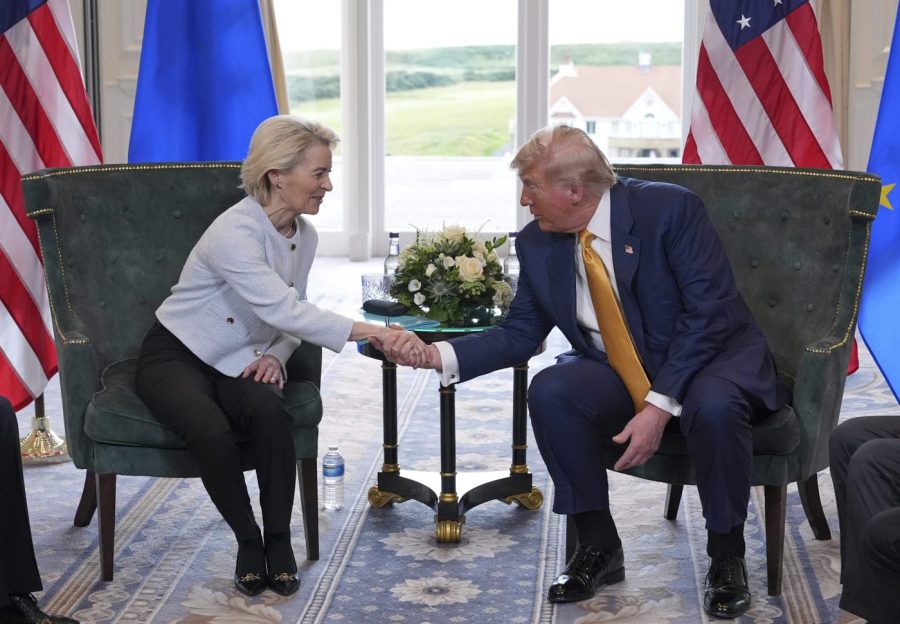US-EU trade deal: What to know

President Trump and European Commission President Ursula von der Leyen unveiled a trade deal over the weekend, with tariffs set at 15 percent for European goods.
The European Union is also set to buy $750 billion in American energy in the deal, Trump announced, and agreed to invest an additional $600 billion in the U.S.
Trump had previously threatened to impose 30-percent tariffs on the EU, which would have started in early August.
“I think it’s the biggest deal ever made,” Trump said.
Here’s what you need to know about the agreement:
What led up to the deal?
Trump’s tariff policy in the first few months of his second term rankled trading partners across the globe, including allies like Canada and the European Union.
In April, the president unveiled his “Liberation Day” tariffs featuring a 20 percent duty on European goods, with the EU responding with its own countermeasures. The president later paused most “reciprocal” tariffs for negotiations but threatened to impose a 50 percent tariff on the EU in late May.
Earlier this month, Trump announced his administration would levy a 30 percent tariff on goods from Mexico and EU members starting Aug. 1.
The president told reporters last week he put the chances of the U.S. coming to a trade agreement with the EU prior to an early August deadline at “50/50.”
“Following a good call with @POTUS, we have agreed to meet in Scotland on Sunday to discuss transatlantic trade relations, and how we can keep them strong,” von der Leyen said in a post on the social platform X last Friday.
What is included in the deal?
According to a statement from von der Leyen, “the vast majority of EU exports” to the U.S. are set to face a tariff rate of 15 percent “across most sectors, including cars, semiconductors and pharmaceuticals.”
The U.S. and Europe “also agreed on zero-for-zero tariffs on a number of strategic products” like aircraft, some chemicals and semiconductor equipment, von der Leyen said.
Other parts of the deal include EU and U.S. agreements on steel and aluminum, energy and artificial intelligence, according to von der Leyen.
What have been the reactions to the deal?
“It is a dark day when an alliance of free peoples, brought together to affirm their common values and to defend their common interests, resigns itself to submission,” French Prime Minister François Bayrou wrote on X, referring to the deal.
Belgium’s prime minister called the deal a “moment of relief” but not cause for celebration. Bart De Wever said in a post on X that he hopes Trump will one day come to “embrace the value of free trade.”
“As we await full details of the new EU–US trade agreement, one thing is clear: this is a moment of relief but not of celebration. Tariffs will increase in several areas and some key questions remain unresolved,” De Wever said.
“I sincerely hope the United States will, in due course, turn away again from the delusion of protectionism and once again embrace the value of free trade – a cornerstone of shared prosperity,” he added.
“This is clearly the best deal we could get under very difficult circumstances,” EU Trade Commissioner Maroš Šefčovič told reporters Monday, according to Reuters.
U.S. Commerce Secretary Howard Lutnick lauded the deal, saying Sunday in a post on X that “President Trump just unlocked one of the biggest economies in the world.”
“The European Union is going to open its 20 Trillion dollar market and completely accept our auto and industrial standards for the first time ever. In addition, it will purchase $750 BILLION in energy from us and invest $600 BILLION in America,” Lutnick added.